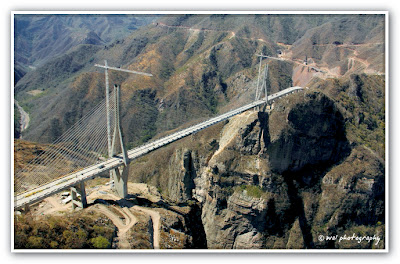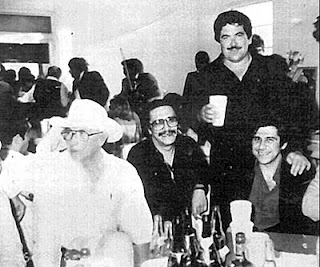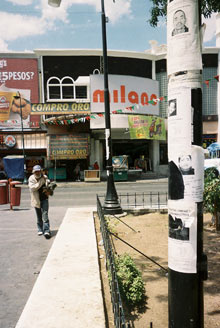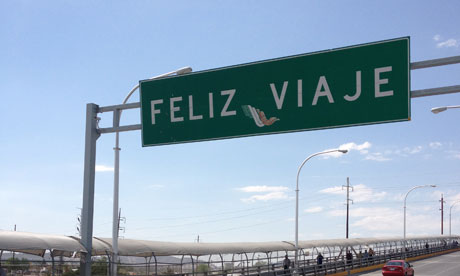Borderland Beat
 |
| DEA Detects the presence of Zetas in Sinaloa. Ranks Sinaloa Cartel as #2 |
DEA documents the presence of the Zetas in the north and south of Sinaloa
RIO DOCE
The presence of Los Zetas Cartel in northern Sinaloa is so obvious that the DEA points to a map on how the organization has expanded not only throughout Mexico but also in Sinaloa state where they have succeeded with the help of Beltran Leyva cartel, former members of the group led by Chapo Guzman and Ismael Zambada.
![]() That coalition has caused an unprecedented war in the municipalities of Sinaloa de Leyva, El Fuerte, Choix, Salvador Alvarado and Guasave, where clashes have occurred not only between government and cartel hitmen from these allies, but between those criminal organizations that are fighting for the territories, the report reveals Drug trafficking organizations in Mexico, sources and trends that increase violence.
That coalition has caused an unprecedented war in the municipalities of Sinaloa de Leyva, El Fuerte, Choix, Salvador Alvarado and Guasave, where clashes have occurred not only between government and cartel hitmen from these allies, but between those criminal organizations that are fighting for the territories, the report reveals Drug trafficking organizations in Mexico, sources and trends that increase violence.
"There are routes that go through that part of Sinaloa and Sonora extend to, and are fought by both organizations and subcartels, and endless violence seems to exist", reports the study conducted by The Congressional Research Service, as released last month.
An example of the above statement can be seen in early May this year, when there was a clash between gunmen and elements of the Mexican army in the mountainous area of the municipality of Sinaloa and Guasave, leaving dozens dead, including three soldiers.
The research also reports that violence is on the rise since the beginning of the administration of President Felipe Calderon, from 2010 to date the trend is lower but then returns with force. It also states that from 2010 onwards there are targets that were previously almost untouchable, such as politicians, journalists, Americans and Central American migrants who cross Mexican territory illegally.
"Violence is not only associated with disputes over territory or to maintain discipline within an organization. But it seems that in every place where the Zetas advance, they do not discriminate when targeting their violence, including applying it to media workers, or even the Government " observes the paper.
The map of death
According to the draft prepared by the Federal Drug Enforcement Administration (DEA), the Zetas have gained control of nearly half the nations territory. Everything that drains into the Gulf of Mexico, including states such as Chiapas, Zacatecas, Aguascalientes, and parts of Durango and Guanajuato.
According to Jim Creechan, a Canadian academic who has researched drug trafficking for several decades, the opening of the new bridge on the Durango-Mazatlán highway can benefit the Zetas, allowing them easy access to build up forces in Sinaloa.
"If they are there or not, that ability to get to Mazatlan can be crucial in the short and medium term, everything depends on how the Army monitors the area," noted Creechan by telephone.
The DEA map ranks the Sinaloa cartel as the second most powerful cartel, which controls the entire Pacific area, except for the area of Michoacan and Guerrero, which is controlled by the Knights Templar, and the Beltran Leyva cartel.
Precisely the latter cartel, which is led by Hector Beltran Leyva, is present in several areas controlled by Joaquin Guzman and Ismael Zambada, and these areas pass through Sinaloa and Sonora, and extend to the border with the USA.
The remainder of the map depicts the state of Chihuahua, mainly dominated by the Juarez cartel, and to a lesser extent by the Sinaloa cartel. while the Gulf cartel has presence in the area of Reynosa and Tampico, Tamaulipas.
Noted is the presence of different groups in cities like Mexico City, Mazatlan, Culiacan, where the DEA also identifies the presence of groups operating in the area such as Beltran Leyva.
According to the DEA, the map was completed in January this year and took six months to produce.
Windfall
According to Michele Leonhart, DEA policy expert, in 2011 drug trafficking organizations throughout the world had earnings of between 200 and 400 billion dollars, with profits coming producing, transporting and selling drugs.
"We're talking about an extremely profitable business, superior to human trafficking, arms trafficking and smuggling of diamonds, together," Leonhart explained in a statement sent to Ríodoce.
The DEA administrator added, "what we are doing now is damage to criminal organizations in their financial systems as a way to deny resources to keep producing, acquiring, transporting and distributing such substances.".
DEA's strategy includes impairing money laundering, and therefore have redoubled their efforts with the Department of the Treasury for the implementation of the Kingpin Act, and the projection is that the effort has produced favorable results.
In this respect, a recent case is that of Juan Jose Esparragoza Moreno, Blu, including a portion of his family. They are included in the list of people persecuted by the U.S. Government Treasury.
"There are organisms that suggest that legalization or regulating drugs will alleviate the problem, but common sense and history has taught us that this does not happen because then the criminals would focus its efforts and migrate to other equally illegal activity" , stated Leonhart.
Kingpin Act; zero results
However, the U.S. government claims that freezing the assets of drug barons in the US and his citizens avoid establishing business relations with people identifed as drug dealers is part of the solution to the problem, some feel otherwise.
June S. Beittel, international affairs analyst at the Congressional Research Service, and author of the report on criminal organizations in Mexico, mentioned in her report that this law, is more than ten years subsequent to implementation, at this time has not yet yielded results.
"That strategy worked very well to dismantle the cartels of Cali and Medellin in the nineties, but clearly has not been as successful here in Mexico," said Beittel.
Other analysts agree that the strategy has created more Kingpin violence in the country, and that has caused the fragmentation of several organizations, and therefore the violence has spread.
"When Calderon came to power there were four key cartels: the Tijuana, Sinaloa, Juarez and the Gulf. Now we see the Zetas, the Beltran Leyva, the Knights Templar, and it has influenced the strategy Kingpin, but the results are obvious, "said Beittel.
The DEA maintains a close relationship with Mexican authorities in their fight to eradicate drug trafficking networks that exist in Sinaloa and the remainder of the country.
The collaboration continues, not only as far as arrests are concerned, as we have collaborated in the arrest of several leaders of various organizations, but, for once have extradited several in our territory to be prosecuted to the full weight of the law, "said Leonhart.
However, the sentences of Benjamin Arellano Felix and Osiel Cardenas Guillen, far from signifying "the full weight of the law." Both were seized a combined $ 150 million, and both were sentenced to 25 years in prison with the possibility of leaving in twelve years.
"The United States, with the help of Mexico will succeed in its fight against drugs," he said Leonhart, but not dwell in the sentences above lords.
According to Justice Department data, between 2010 and 2011, Mexico extradited 187 drug traffickers, including high-profile drug lords.
The presence of Los Zetas Cartel in northern Sinaloa is so obvious that the DEA points to a map on how the organization has expanded not only throughout Mexico but also in Sinaloa state where they have succeeded with the help of Beltran Leyva cartel, former members of the group led by Chapo Guzman and Ismael Zambada.
 That coalition has caused an unprecedented war in the municipalities of Sinaloa de Leyva, El Fuerte, Choix, Salvador Alvarado and Guasave, where clashes have occurred not only between government and cartel hitmen from these allies, but between those criminal organizations that are fighting for the territories, the report reveals Drug trafficking organizations in Mexico, sources and trends that increase violence.
That coalition has caused an unprecedented war in the municipalities of Sinaloa de Leyva, El Fuerte, Choix, Salvador Alvarado and Guasave, where clashes have occurred not only between government and cartel hitmen from these allies, but between those criminal organizations that are fighting for the territories, the report reveals Drug trafficking organizations in Mexico, sources and trends that increase violence."There are routes that go through that part of Sinaloa and Sonora extend to, and are fought by both organizations and subcartels, and endless violence seems to exist", reports the study conducted by The Congressional Research Service, as released last month.
An example of the above statement can be seen in early May this year, when there was a clash between gunmen and elements of the Mexican army in the mountainous area of the municipality of Sinaloa and Guasave, leaving dozens dead, including three soldiers.
The research also reports that violence is on the rise since the beginning of the administration of President Felipe Calderon, from 2010 to date the trend is lower but then returns with force. It also states that from 2010 onwards there are targets that were previously almost untouchable, such as politicians, journalists, Americans and Central American migrants who cross Mexican territory illegally.
"Violence is not only associated with disputes over territory or to maintain discipline within an organization. But it seems that in every place where the Zetas advance, they do not discriminate when targeting their violence, including applying it to media workers, or even the Government " observes the paper.
The map of death
According to the draft prepared by the Federal Drug Enforcement Administration (DEA), the Zetas have gained control of nearly half the nations territory. Everything that drains into the Gulf of Mexico, including states such as Chiapas, Zacatecas, Aguascalientes, and parts of Durango and Guanajuato.
According to Jim Creechan, a Canadian academic who has researched drug trafficking for several decades, the opening of the new bridge on the Durango-Mazatlán highway can benefit the Zetas, allowing them easy access to build up forces in Sinaloa.
"If they are there or not, that ability to get to Mazatlan can be crucial in the short and medium term, everything depends on how the Army monitors the area," noted Creechan by telephone.
 |
| The Durango-Mazatlan Bridge benefits Los Zetas |
The DEA map ranks the Sinaloa cartel as the second most powerful cartel, which controls the entire Pacific area, except for the area of Michoacan and Guerrero, which is controlled by the Knights Templar, and the Beltran Leyva cartel.
Precisely the latter cartel, which is led by Hector Beltran Leyva, is present in several areas controlled by Joaquin Guzman and Ismael Zambada, and these areas pass through Sinaloa and Sonora, and extend to the border with the USA.
The remainder of the map depicts the state of Chihuahua, mainly dominated by the Juarez cartel, and to a lesser extent by the Sinaloa cartel. while the Gulf cartel has presence in the area of Reynosa and Tampico, Tamaulipas.
Noted is the presence of different groups in cities like Mexico City, Mazatlan, Culiacan, where the DEA also identifies the presence of groups operating in the area such as Beltran Leyva.
According to the DEA, the map was completed in January this year and took six months to produce.
Windfall
According to Michele Leonhart, DEA policy expert, in 2011 drug trafficking organizations throughout the world had earnings of between 200 and 400 billion dollars, with profits coming producing, transporting and selling drugs.
"We're talking about an extremely profitable business, superior to human trafficking, arms trafficking and smuggling of diamonds, together," Leonhart explained in a statement sent to Ríodoce.
The DEA administrator added, "what we are doing now is damage to criminal organizations in their financial systems as a way to deny resources to keep producing, acquiring, transporting and distributing such substances.".
DEA's strategy includes impairing money laundering, and therefore have redoubled their efforts with the Department of the Treasury for the implementation of the Kingpin Act, and the projection is that the effort has produced favorable results.
In this respect, a recent case is that of Juan Jose Esparragoza Moreno, Blu, including a portion of his family. They are included in the list of people persecuted by the U.S. Government Treasury.
"There are organisms that suggest that legalization or regulating drugs will alleviate the problem, but common sense and history has taught us that this does not happen because then the criminals would focus its efforts and migrate to other equally illegal activity" , stated Leonhart.
Kingpin Act; zero results
However, the U.S. government claims that freezing the assets of drug barons in the US and his citizens avoid establishing business relations with people identifed as drug dealers is part of the solution to the problem, some feel otherwise.
June S. Beittel, international affairs analyst at the Congressional Research Service, and author of the report on criminal organizations in Mexico, mentioned in her report that this law, is more than ten years subsequent to implementation, at this time has not yet yielded results.
"That strategy worked very well to dismantle the cartels of Cali and Medellin in the nineties, but clearly has not been as successful here in Mexico," said Beittel.
Other analysts agree that the strategy has created more Kingpin violence in the country, and that has caused the fragmentation of several organizations, and therefore the violence has spread.
"When Calderon came to power there were four key cartels: the Tijuana, Sinaloa, Juarez and the Gulf. Now we see the Zetas, the Beltran Leyva, the Knights Templar, and it has influenced the strategy Kingpin, but the results are obvious, "said Beittel.
The DEA maintains a close relationship with Mexican authorities in their fight to eradicate drug trafficking networks that exist in Sinaloa and the remainder of the country.
The collaboration continues, not only as far as arrests are concerned, as we have collaborated in the arrest of several leaders of various organizations, but, for once have extradited several in our territory to be prosecuted to the full weight of the law, "said Leonhart.
However, the sentences of Benjamin Arellano Felix and Osiel Cardenas Guillen, far from signifying "the full weight of the law." Both were seized a combined $ 150 million, and both were sentenced to 25 years in prison with the possibility of leaving in twelve years.
"The United States, with the help of Mexico will succeed in its fight against drugs," he said Leonhart, but not dwell in the sentences above lords.
According to Justice Department data, between 2010 and 2011, Mexico extradited 187 drug traffickers, including high-profile drug lords.
This is a repost found on Borderland Beat Forum, posted by Siskiyou Kid
Translation editing, photos, map and links by Chivis
KINGPIN ACT LINK HERE
CONGRESSIONAL REPORT-MEXICO'S DTOs AND RISING VIOLENCE LINK HERE
KINGPIN ACT LINK HERE
CONGRESSIONAL REPORT-MEXICO'S DTOs AND RISING VIOLENCE LINK HERE






















 Missing persons posters in Juarez. Photograph: Daniel Hernandez
Missing persons posters in Juarez. Photograph: Daniel Hernandez 










